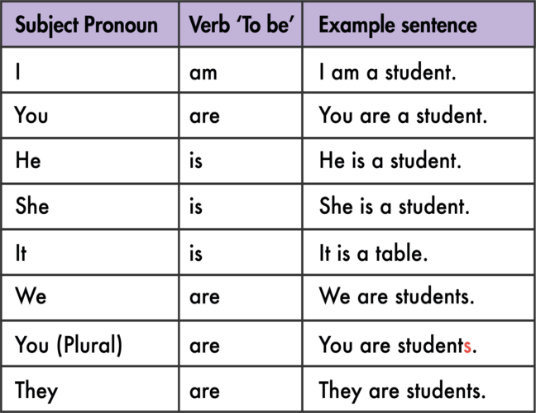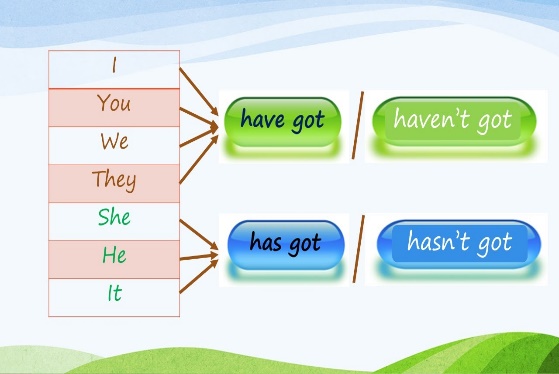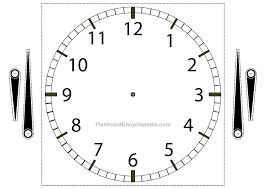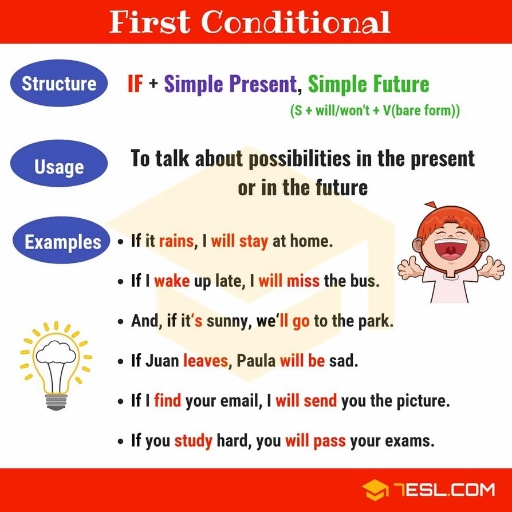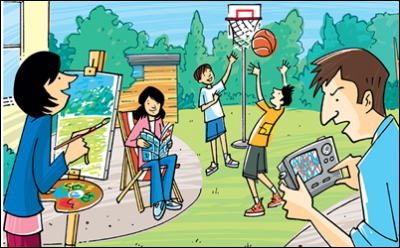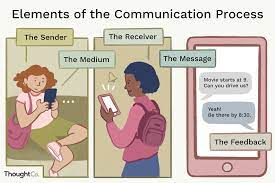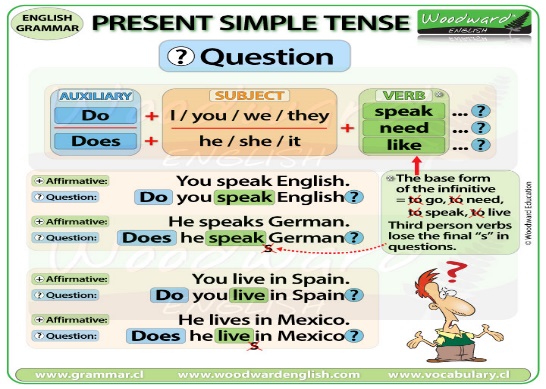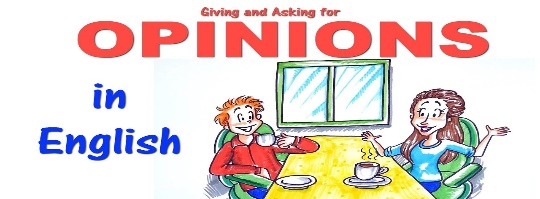Назар аударыңыз. Бұл материалды сайт қолданушысы жариялаған. Егер материал сіздің авторлық құқығыңызды бұзса, осында жазыңыз. Біз ең жылдам уақытта материалды сайттан өшіреміз
Жақын арада сайт әкімшілігі сізбен хабарласады

Бонусты жинап картаңызға (kaspi Gold, Halyk bank) шығарып аласыз


ҚМЖ 7 сынып 1 тоқсан English Plus кітабы бойынша
Дипломдар мен сертификаттарды алып үлгеріңіз!


Материалдың толық нұсқасын
жүктеп алып көруге болады
Short term plan
Тексерілді: ___
|
Unit of a long term plan: Family and school |
School: ___ |
||
|
Date: |
Teacher name: ___ |
||
|
Grade: 7 |
Number present: |
absent: |
|
|
Lesson title |
Vocabulary: Family |
||
|
Learning objectives |
7.2.5.1 understand most specific information and detail of supported, extended talk on a range general and curricular topics 7.3.5.1 keep interaction going in longer exchanges on a range of general and curricular topics |
||
|
Lesson objectives |
Learners will be able to: - Apply topic vocabulary to talk about the family - Learn vocabulary for family relationships. - Ask and answer personal questions about family |
||
|
Plan |
|||
|
Stages / Time |
Teachers actions |
Students actions |
Assessment criteria |
Resources |
|
Start
|
Organization moment : 1.Greeting. Pre – listening Warm-up With books closed, write the word family on the board. • Ask individual students: How many people are there in your family? Who are they? Elicit words for family members and write them on the board Lead - In Before speaking about the family let’s name as many words connected with this word as you remember. Find some words from the text.
Look at the picture and say what the theme of our lesson will be? You see different word in the picture. What can you say about your family |
“The wish flower” method helps to start the lesson with good wishes to each other. The aim: To develop Ss speaking skills and create friendly atmosphere Efficiency: By wishing each other they feel better and feel the support of others Students say different words from the picture
|
At the organization moment T tries to award active Ss. «The praise» method is used to evaluate Ss with phrases like: “Good job! Well done!” Formative Assessment
Good job! |
Pictures PPT |
|
Main part
|
While – listening Listening for details – Students listen for groups of words and phrases at sentence level. Ex:1 P:4 In a weaker class, students use their dictionaries to check the meaning of the words, then match them. In a stronger class, students can try to do this in pairs from memory. • Once students have listened to the CD and checked their answers. Differentiation: «Verbal support» method is used to help Students use new words in the text. Ex: 2 P: 4 Students look at the photos with the class and discuss the people shown in each one. Allow students time to read the texts. Once they have chosen the answers individually, check them as a class Differentiation:Support; learners are arranged to interact in mixed groups. Topic vocabulary is used while responding to the given questions |
Students listen and check their answers. ANSWERS 1 father 2 brother 3 uncle 4 grandfather 5 husband 6 son 7 grandson 8 nephew Students read the text and choose the correct words ANSWERS 1 children 2 sons 3 daughters 4 brothers 5 grandmother 6 sisters 7 mother 8 husband’s
|
Assessment criteria - Use topic related vocabulary in group discussion Descriptor: -understand the main idea Peer assessment: answer key Assessment criteria: -identify main idea of the text Descriptor: - read the text and choose the correct words -Make CCQ questions
|
CD 1 Cards Worksheets |
|
End
|
Home task: Ex: 4P: 4 WB |
|
Poster Success KWL chart |
|
Short term plan
Тексерілді: ___
|
Unit of a long term plan: Family and school |
School: ___ |
||
|
Date: |
Teacher name: ___ |
||
|
Grade: 7 |
Number present: |
absent: |
|
|
Lesson title |
Language focus: Be+ Subject pronoun. Possessive ‘s |
||
|
Learning objectives |
7.6.6.1 use a variety of subject pronouns including possessives on a growing range of familiar general and curricular topics |
||
|
Lesson objectives |
Learners will be able to: - Learn and practise the use of be + subject pronouns to ask and answer questions and give personal information. - Learn and practise the use of the possessive’s to talk about possessions. |
||
|
Plan |
|||
|
Stages / Time |
Teachers actions |
Students actions |
Assessment criteria |
Resources |
|
Start
|
Organization moment : 1.Greeting. Warm-up With books closed, ask a student: How old are you? Write the question on the board and underline are. • Elicit the answer (I’m fourteen.) and write it on the board. Underline the verb ’m. • Ask another student: How old is … ? Write the answer on the board (He / She is fourteen.) and underline the verb is Lead – In
|
“The wish flower” method helps to start the lesson with good wishes to each other. The aim: To develop Ss speaking skills and create friendly atmosphere Efficiency: By wishing each other they feel better and feel the support of others Students say different words from the picture
|
At the organization moment T tries to award active Ss. «The praise» method is used to evaluate Ss with phrases like: “Good job! Well done!” Formative Assessment
Good job! |
Pictures PPT |
|
Main part
|
Ex:1 P:4 When students have completed the table, check answers, then model and drill pronunciation of the sentences Differentiation: «Verbal support» method is used to help Students use new words in the text. Ex: 2 P: 4 Clarify that students should write each sentence in three forms. Students complete the sentences individually. In a weaker class, this could be pair work.
Differentiation:Support; learners are arranged to interact in mixed groups. Topic vocabulary is used while responding to the given questions |
Students complete the table using correct form of to be ANSWERS 1 isn’t 2 Is
Students complete the sentence using affirmative form of to be. Then write the negative and question forms. ANSWERS 1 ’re 2 ’s 3 ’m 4 are 5 ’re 1 You aren’t in my class. 2 It isn’t a nice day. 3 I’m not fourteen years old. 4 Your cousins aren’t in Russia. 5 We aren’t partners. 1 Are you in my class? 2 Is it a nice day? 3 Are you fourteen years old? 4 Are your cousins in Russia? 5 Are we partners?
|
Assessment criteria - use a variety of subject pronouns including possessives Descriptor: -can use of be + subject pronouns Assessment criteria: Clarify that students should write each sentence in three forms. Descriptor: - can write each sentence in three forms. -Make CCQ questions
|
CD 1 Cards Worksheets |
|
End
|
Home task: EX: 3P: 5 WB |
|
Poster Success KWL chart |
|
Short term plan
Тексерілді: ___
|
Unit of a long term plan: Family and school |
School: ___ |
||
|
Date: |
Teacher name: ___ |
||
|
Grade: 7 |
Number present: |
absent: |
|
|
Lesson title |
Vocabulary: School Countries, nationalities and languages. |
||
|
Learning objectives |
7.2.5.1 understand most specific information and detail of supported, extended talk on a range general and curricular topics 7.3.5.1 keep interaction going in longer exchanges on a range of general and curricular topics 6.1.9.1 use imagination to express thoughts, ideas, experiences and feelings |
||
|
Lesson objectives |
Learners will be able to: • Practise forming compound nouns to do with school. • Use compound nouns to talk about schoolwork. |
||
|
Plan |
|||
|
Stages / Time |
Teachers actions |
Students actions |
Assessment criteria |
Resources |
|
Start
|
Organization moment : 1.Greeting. Warm-up • With books closed, ask students what their favourite subjects are at school. Elicit some words for school subjects and write them on the board. • Ask students what words they know that are related to schoolwork. Elicit a few nouns such as exam and teacher and write them on the board. Lead – In
What do you see in this picture? Do you go to school on foot or by bus? How many girls are there in your class? |
“The wish flower” method helps to start the lesson with good wishes to each other. The aim: To develop Ss speaking skills and create friendly atmosphere Efficiency: By wishing each other they feel better and feel the support of others Students say different words from the picture
|
At the organization moment T tries to award active Ss. «The praise» method is used to evaluate Ss with phrases like: “Good job! Well done!” Formative Assessment
Good job! |
Pictures PPT |
|
Main part
|
Ex:1 P:6• Look at the pictures with the class and discuss what students can see. • Allow students time to read through the list of nouns, then check understanding by asking for translations Differentiation: «Verbal support» method is used to help Students use new words in the text. Ex: 2 P: 6 Once students have chosen the correct words, ask them to compare their answers in pairs before you check with the class Differentiation:Support; learners are arranged to interact in mixed groups. Topic vocabulary is used while responding to the given questions Ex:3 p: 6 Read through the key phrases with the class. Model and drill pronunciation of the questions if necessary |
Students write combinations of nouns ANSWERS 1 science class 4 music teacher / class 2 maths exercise 5 PE class 3 French book 6 ICT room
Students choose the correct words ANSWERS 1 exercise 5 PE 2 English 6 teacher 3 room 7 book 4 homework
|
Assessment criteria - Identify the main idea in extended talks with little support Descriptor: - write combinations of nouns Assessment criteria: -Use compound nouns to talk about schoolwork Descriptor: -. choose the correct words
-Make CCQ questions
|
CD 1 Cards Worksheets |
|
End
|
Home task: EX: 4 P: 6 WB |
|
Poster Success KWL chart |
|
Short term plan
Тексерілді: ___
|
Unit of a long term plan: Family and school |
School: ___ |
||
|
Date: |
Teacher name: ___ |
||
|
Grade: 7 |
Number present: |
absent: |
|
|
Lesson title |
Language focus: Have got/ There is/ there are |
||
|
Learning objectives |
7.6.6.1 use have got and has got to talk about possessions on a growing range of familiar general and curricular topics |
||
|
Lesson objectives |
Learners will be able to: • Learn affirmative, negative and question forms of have got. • Use have got to ask and answer questions about school. • Learn affirmative, negative and question forms of there is, there are. • Use there is, there are to ask and answer questions about school. |
||
|
Plan |
|||
|
Stages / Time |
Teachers actions |
Students actions |
Assessment criteria |
Resources |
|
Start
|
Organization moment : 1.Greeting. Warm-up • With books closed, ask individual students What classes have you got today? • Elicit answers and write have got on the board. • Elicit that we use have got to talk about possessions and tell students that we can also use it to talk about school. Lead – In
They have got a new car. She has got a pet. He has got a bike/ |
“The wish flower” method helps to start the lesson with good wishes to each other. The aim: To develop Ss speaking skills and create friendly atmosphere Efficiency: By wishing each other they feel better and feel the support of others Students say different words from the picture
|
At the organization moment T tries to award active Ss. «The praise» method is used to evaluate Ss with phrases like: “Good job! Well done!” Formative Assessment
Good job! |
Pictures PPT |
|
Main part
|
Ex:1 P:7 In a stronger class, ask students to complete the tables individually. In a weaker class, offer support by doing this activity as a class on the board. Differentiation: «Verbal support» method is used to help Students use new words in the text. Ex: 2 P: 7 Students work individually to order the sentences. • Ask students to check their answers in pairs before you check with the class Differentiation:Support; learners are arranged to interact in mixed groups. Topic vocabulary is used while responding to the given questions Ex: 2 P: 7
• Write on the board: There ____ one art teacher at this school. There ____ three maths teachers. • Elicit the missing words, then elicit other sentences using there is, there are from the class |
Students complete the table using the correct form of have got ANSWERS 1 ’ve 2 hasn’t got 3 haven’t got Have Students order the words to make sentences ANSWERS 1 My sister hasn’t got history classes. 2 Has the teacher got our books? 3 What exercises have we got for homework? 4 Our school has got a good science laboratory. 5 I haven’t got your ICT notes. |
Assessment criteria - Learn affirmative, negative and question forms of have got. Descriptor: - complete the table using the correct form of have got Assessment criteria: Use have got to ask and answer questions about school Descriptor: - order the words to make sentences
-Make CCQ questions
|
CD 1 Cards Worksheets |
|
End
|
Home task: EX: 3 P: 7 WB |
|
Poster Success KWL chart |
|
Short term plan
Тексерілді: ___
|
Unit of a long term plan: Hobbies and Leisure |
School: ___ |
||
|
Date: |
Teacher name: ___ |
||
|
Grade: 7 |
Number present: |
absent: |
|
|
Lesson title |
Time and numbers p.78 (a millennium, a century, etc.) |
||
|
Learning objectives |
7.6.1.1 begin to use basic abstract nouns and compound nouns and noun phrases describing times and location on a growing range of familiar general and curricular topics 7.6.5.1 use questions including questions with whose, how often , how long and a growing range of tag questions on a growing range of familiar general and curricular topics |
||
|
Lesson objectives |
Learners will be able to:- • Learn vocabulary of periods of time and numbers. • Learn how to say numbers. • Do a quiz about numbers. |
||
|
Plan |
|||
|
Stages / Time |
Teachers actions |
Students actions |
Assessment criteria |
Resources |
|
Start
|
Organization moment : 1.Greeting. Warm-up • Revise basic numbers with the class by writing some simple sums on the board and asking students to give the answer. For example, write 13 + 4 =, 27+ 5 =, 5 x 8 =, etc. • Write the numbers 1,000 and 100 on the board and ask students what we call a period of 1,000 or 100 years. • Ask students if they know any other words for periods of time Lead – In
What time is it now? How many month are there in a year? |
“The wish flower” method helps to start the lesson with good wishes to each other. The aim: To develop Ss speaking skills and create friendly atmosphere Efficiency: By wishing each other they feel better and feel the support of others Students say different words from the picture
|
At the organization moment T tries to award active Ss. «The praise» method is used to evaluate Ss with phrases like: “Good job! Well done!” Formative Assessment
Good job! |
Pictures PPT |
|
Main part
|
Ex:1 P:78 Students copy the lists and complete them. In a weaker class, allow them to discuss their ideas in pairs as they work. Differentiation: «Verbal support» method is used to help Students use new words in the text. Ex: 2 P: 78 Play the CD and ask students to listen and repeat. In a weaker class, you may need to play the CD twice for students to feel confident doing this. Differentiation:Support; learners are arranged to interact in mixed groups. Topic vocabulary is used while responding to the given questions Ex: 3 P: 78 Look at the sentences and explain that in each one there is a mistake in the form of the number In a weaker class, do the first two items with the class as examples. In a stronger class, ask students to write two or three more similar sentences with mistakes, then give these to their partner to correct |
Students complete the list with the words in the box. ANSWERS 1 a century 6 a thousand 2 a year 7 a couple 3 a day 8 a half y 4 a second 9 nought 5 a billion Students listen and say numbers. Students correct the sentences using numbers and ordinals ANSWERS: 1 three 4 second 2 first 5 five 3 twelfth |
Assessment criteria - Learn vocabulary of periods of time and numbers. Descriptor: - discuss their ideas in pairs Assessment criteria: Learn how to say numbers Descriptor: - listen and reapet. -Make CCQ questions
|
CD 1 Cards Worksheets |
|
End
|
Home task: EX: 2 P: 58 WB |
|
Poster Success KWL chart |
|
Short term plan
Тексерілді: ___
|
Unit of a long term plan: Hobbies and Leisure |
School: ___ |
||
|
Date: |
Teacher name: ___ |
||
|
Grade: 7 |
Number present: |
absent: |
|
|
Lesson title |
Superstitions p.80 (lucky, fear, superstitious, etc.) |
||
|
Learning objectives |
7.1.9.1 use imagination to express thoughts, ideas, experiences and feelings 7.4.1.1 understand the main points in a growing range of short, simple texts on general and curricular topics 7.4.2.1 understand independently specific information and detail in short, simple texts on a limited range of general and curricular topic |
||
|
Lesson objectives |
Learners will be able to: • Read about lucky numbers. • Read for general meaning and specific information. • Talk about superstitions |
||
|
Plan |
|||
|
Stages / Time |
Teachers actions |
Students actions |
Assessment criteria |
Resources |
|
Start
|
Organization moment : 1.Greeting. Pre - reading Warm-up • With books closed, ask students if they have a favourite number or a lucky number. • Ask if they think any numbers are unlucky and why. • Ask if they think that the same numbers are lucky and unlucky in different countries. Lead – In
|
“The wish flower” method helps to start the lesson with good wishes to each other. The aim: To develop Ss speaking skills and create friendly atmosphere Efficiency: By wishing each other they feel better and feel the support of others Students say different words from the picture
|
At the organization moment T tries to award active Ss. «The praise» method is used to evaluate Ss with phrases like: “Good job! Well done!” Formative Assessment
Good job! |
Pictures PPT |
|
Main part
|
While – reading Ex:1 P:80 Look at the photo and read the question with the class. Discuss their ideas. If students are struggling, focus them on the sequence of the numbers. Differentiation: «Verbal support» method is used to help Students use new words in the text. Ex: 2 P: 80 • Students read through the text once, without pausing at the numbered gaps. Differentiation:Support; learners are arranged to interact in mixed groups. Topic vocabulary is used while responding to the given questions Ex: 3 P: 80 Students complete the sentences with the new words. In a weaker class, check understanding of the words, for example, by asking students to translate them into their own language. |
Students look at the photo of the buttons in the lift. ANSWERS There is no number 13, or floor number 13. This is because 13 is considered an unlucky number in some countries.
Students read the text there is one sentence that you don’t need. ANSWERS 1 c 2 e 3 b 4 a Students complete the sentences. ANSWERS : 1 lucky 4 unlucky 2 fear 5 superstition 3 superstitious |
Assessment criteria - Read about lucky numbers. Descriptor: - Read about lucky numbers. Assessment criteria: -Read for general meaning and specific information Descriptor: - read the text there is one sentence that you don’t need. -Make CCQ questions
|
CD 1 Cards Worksheets |
|
End
|
Home task: EX: 3 P: 62 WB |
|
Poster Success KWL chart |
|
Short term plan
Тексерілді: ___
|
Unit of a long term plan: Hobbies and Leisure |
School: ___ |
||
|
Date: |
Teacher name: ___ |
||
|
Grade: 7 |
Number present: |
absent: |
|
|
Lesson title |
Making predictions (will, won't) p.81 |
||
|
Learning objectives |
7.1.9.1 use imagination to express thoughts, ideas, experiences and feelings 7.6.8.1 use future form will to make offers, promises, and predictions on a growing range of familiar general and curricular topics |
||
|
Lesson objectives |
Learners will be able to: • Learn will and won’t. • Learn phrases for making predictions. • Practise making predictions. |
||
|
Plan |
|||
|
Stages / Time |
Teachers actions |
Students actions |
Assessment criteria |
Resources |
|
Start
|
Organization moment : 1.Greeting. Warm-up Refer students back to the text on page 60 and ask: What will happen in 2016 in China? Elicit the answer: A lot of children will celebrate their eighth birthday. Write this on the board and underline will Focus on the underlined verbs on the board and ask students if they refer to the past, present or future. Elicit that they refer to the future and that they are predictions Lead – In
When will you visit Astana? Where will you go to your holiday?
|
“The wish flower” method helps to start the lesson with good wishes to each other. The aim: To develop Ss speaking skills and create friendly atmosphere Efficiency: By wishing each other they feel better and feel the support of others Students say different words from the picture
|
At the organization moment T tries to award active Ss. «The praise» method is used to evaluate Ss with phrases like: “Good job! Well done!” Formative Assessment
Good job! |
Pictures PPT |
|
Main part
|
Ex:1 P:81 Students complete the sentences from the text. Elicit that predictions can be either affirmative or negative. Differentiation: «Verbal support» method is used to help Students use new words in the text. Ex: 2 P: 81 • Remind students to read through all the questions and answers before they match them. They should think about whether each one needs a short answer or more information Differentiation:Support; learners are arranged to interact in mixed groups. Topic vocabulary is used while responding to the given questions Ex: 3 P: 81 -Students complete the sentences individually. Encourage them to think about different people they know, and also remind them that they can predict what people will and won’t do. Then students compare their sentences in pairs. |
Students complete the sentences from the text ANSWERS 1 be 2 won’t
Students match the questions with the answers ANSWERS 1 c 2 a 3 b Rules ANSWERS: 1 will 2 won’t Students write sentences. Predict the future for your friends. ANSWERS: Students’ own answers |
Assessment criteria - Learn will and won’t. Descriptor: -can use will and won’t Assessment criteria: Learn phrases for making predictions. Descriptor: - match the questions with the answers
-Make CCQ questions
|
CD 1 Cards Worksheets |
|
End
|
Home task: EX: 3 P: 59 WB |
|
Poster Success KWL chart |
|
.
Short term plan
Тексерілді: Қ. Байсеитов
|
Unit of a long term plan: Hobbies and Leisure |
School: ___ |
||
|
Date: |
Teacher name: ___ |
||
|
Grade: 7 |
Number present: |
absent: |
|
|
Lesson title |
Adjectives: characteristics p.82 (helpful, easy-going, impatient, etc.) |
||
|
Learning objectives |
7.6.3.1 use common participles as adjectives and order adjectives correctly in front of nouns on a growing range of familiar general and curricular topics 7.2.7.1 recognize the opinion of the speaker(s) in supported extended talk on a range of general and curricular topics 7.3.3.1 give an opinion at sentence and discourse level on an increasing range of general and curricular topics |
||
|
Lesson objectives |
Learners will be able to: • Learn adjectives describing personality. • Listen for general meaning and specific details. • Describe personality |
||
|
Plan |
|||
|
Stages / Time |
Teachers actions |
Students actions |
Assessment criteria |
Resources |
|
Start
|
Organization moment : 1.Greeting. Warm-up • With books closed, write the word personality on the board. • Ask what words we can use to describe someone’s personality. Elicit some words and write them on the board. • Ask some students to describe their own personality, or the personality of a friend or family member. Lead – In
This is Anna. Anna is very beautiful girl. She always helps her mother. Today is a bit unhappy because her mother is ill. |
“The wish flower” method helps to start the lesson with good wishes to each other. The aim: To develop Ss speaking skills and create friendly atmosphere Efficiency: By wishing each other they feel better and feel the support of others Students say different words from the picture
|
At the organization moment T tries to award active Ss. «The praise» method is used to evaluate Ss with phrases like: “Good job! Well done!” Formative Assessment
Good job! |
Pictures PPT |
|
Main part
|
Ex:1 P:82 Model and drill the pronunciation of the adjectives. In a weaker class, check understanding, for example, by asking them to translate the adjectives into their own language. In a stronger class, encourage students to define the words by asking them to give examples of behaviour which could be described by the adjectives Differentiation: «Verbal support» method is used to help Students use new words in the text. Ex: 2 P: 82 Go through the example with the class. In a stronger class, ask students to recap what the opposite for each adjective would be Differentiation:Support; learners are arranged to interact in mixed groups. Topic vocabulary is used while responding to the given questions Ex: 4 P: 82 Explain that students are going to listen to three students discussing numerology. Tell them to read through the three questions and think about what words they might hear |
Students work in pairs. Write pairs of opposite adjectives ANSWERS helpful – unhelpful shy – outgoing easy-going – moody generous – mean impatient – patient creative – unimaginative ambitious – unambitious modest – arrogant friendly – unfriendly peaceful – aggressive negative – positive serious – funny
Students choose adjectives to describe the people. ANSWERS 1 modest 2 helpful 3 generous 4 ambitious 5 peaceful 6 negative 7 shy 8 outgoing 9 unimaginative 10 creative 11 serious Students listen to Holly, Mark and Becky and answer the questions. ANSWERS: 1 Mark 2 Becky 3 Holly
|
Assessment criteria - Learn adjectives describing personality. Descriptor: - Write pairs of opposite adjectives Assessment criteria: -Listen for general meaning and specific details Descriptor: -choose adjectives to describe the people.
-Make CCQ questions
|
CD 1 Cards Worksheets |
|
End
|
Home task: EX: 2 P:60 WB |
|
Poster Success KWL chart |
|
Short term plan
Тексерілді: Қ. Байсеитов
|
Unit of a long term plan: Hobbies and Leisure |
School: ___a |
||
|
Date: |
Teacher name: ___ |
||
|
Grade: 7 |
Number present: |
absent: |
|
|
Lesson title |
First conditional p.83 |
||
|
Learning objectives |
7.1.9.1 use imagination to express thoughts, ideas, experiences and feelings 7.6.16.1 use conjunctions if , when, where, so, and, or, but, because , before, after to link parts of sentences in short texts on a growing range of familiar general and curricular topics |
||
|
Lesson objectives |
Learners will be able to: • Learn the first conditional. • Read about superstitions around the world. • Practise using the first conditional. |
||
|
Plan |
|||
|
Stages / Time |
Teachers actions |
Students actions |
Assessment criteria |
Resources |
|
Start
|
Organization moment : 1.Greeting. Warm-up Ask students to think about the conversation about numerology on page 62. Ask: What does the horoscope say will happen to Mark today? (He will meet two friendly girls.) Ask students to find the sentence in exercise 1 which relates to this. (If you go to a cafe today, you’ll meet two friendly girls.) Lead – In
|
“The wish flower” method helps to start the lesson with good wishes to each other. The aim: To develop Ss speaking skills and create friendly atmosphere Efficiency: By wishing each other they feel better and feel the support of others Students say different words from the picture
|
At the organization moment T tries to award active Ss. «The praise» method is used to evaluate Ss with phrases like: “Good job! Well done!” Formative Assessment
Good job! |
Pictures PPT |
|
Main part
|
Ex:1 P:83 Students complete the rules. Allow them to discuss this in pairs if they find it difficult. Differentiation: «Verbal support» method is used to help Students use new words in the text. Ex: 2 P: 83 Read the title with the class and remind them of the word superstition from page 60. Differentiation:Support; learners are arranged to interact in mixed groups. Topic vocabulary is used while responding to the given questions Ex: 3 P: 83 • Look at the text with the class and ask them to identify what it is (a horoscope) Ask students to compare their answers in pairs and correct any mistakes |
Students choose the correct words ANSWERS 1 go 2 ’ll meet 3 ’ll find out 4 tell 5 Will 6 tell Students choose the correct words. ANSWERS 1 ’ll be 2 ’re 3 won’t 4 put 5 see, will visit 6 ’ll lose, you wash Students complete the text using first conditional. ANSWERS: 1 ’ll meet 2 are 3 listen 4 ’ll learn 5 don’t listen 6 won’t learn
|
Assessment criteria - Learn the first conditional Descriptor: - complete the rules and discuss in pairs Assessment criteria: -Read about superstitions around the world Descriptor: - remind the word superstition -Make CCQ questions
|
CD 1 Cards Worksheets |
|
End
|
Home task: EX: 3P: 5 WB |
|
Poster Success KWL chart |
|
Short term plan
Тексерілді: Қ. Байсеитов
|
Unit of a long term plan: Hobbies and Leisure |
School: ___ |
||
|
Date: |
Teacher name: ___ |
||
|
Grade: 7 |
Number present: |
absent: |
|
|
Lesson title |
A future survey p.84 |
||
|
Learning objectives |
7.2.5.1 understand most specific information and detail of supported, extended talk on a range general and curricular topics 7.3.5.1 keep interaction going in longer exchanges on a range of general and curricular topics |
||
|
Lesson objectives |
Learners will be able to: • Listen to a conversation about probability in the future. • Learn key phrases for speaking about probability in the future. • Practise speaking about probability in the future. |
||
|
Plan |
|||
|
Stages / Time |
Teachers actions |
Students actions |
Assessment criteria |
Resources |
|
Start
|
Organization moment : 1.Greeting. Warm-up With books closed, write The future on the board and ask students what things they think will happen in the future If students answer with words like perhaps and possible, write these on the board and elicit that we use these words when we are not certain Lead – In
Do you think about your future much? Do you think your dreams and reality about your future going to be different? If yes, why? Where do you think you will live in 20 years? |
“The wish flower” method helps to start the lesson with good wishes to each other. The aim: To develop Ss speaking skills and create friendly atmosphere Efficiency: By wishing each other they feel better and feel the support of others Students say different words from the picture
|
At the organization moment T tries to award active Ss. «The praise» method is used to evaluate Ss with phrases like: “Good job! Well done!” Formative Assessment
Good job! |
Pictures PPT |
|
Main part
|
Ex:1 P: 84 Look at the picture with the class and ask the question. Ask students to explain the reasons for their answers. Differentiation: «Verbal support» method is used to help Students use new words in the text. Ex: 2 P: 84 Focus students on the dialogue, and explain that they should read it as they listen to find the answer to the question in the instructions. Tell them not to worry about the blue words at this stage Differentiation:Support; learners are arranged to interact in mixed groups. Topic vocabulary is used while responding to the given questions Ex: 2 P: 84 • Ask students to read the key phrases and find them in the dialogue. You can check understanding by asking students to translate them into their own language. • Students then identify the speaker for each phrase. |
Students look at the picture what are Collin and Lena doing ? ANSWERS A survey.
Students listen and read the dialogue ANSWERS Callum is positive, but Leah is negative. Students find the key phrases in the dialogue. ANSWERS: 1 Leah 2 Callum 3 Leah 4 Callum 5 Callum 6 Leah |
Assessment criteria - Listen to a conversation about probability in the future Descriptor: -Discuss and answer the question Assessment criteria: -Learn key phrases for speaking about probability in the future. Descriptor: - listen and read the dialogue -Make CCQ questions
|
CD 1 Cards Worksheets |
|
End
|
Home task: EX: 2 P: 63 WB |
|
Poster Success KWL chart |
|
Short term plan
Тексерілді: Қ. Байсеитов
|
Unit of a long term plan: Hobbies and Leisure |
School: ___ |
||
|
Date: |
Teacher name: ___ |
||
|
Grade: 7 |
Number present: |
absent: |
|
|
Lesson title |
A report on a survey p.85 |
||
|
Learning objectives |
7.6.2.1 use quantifiers including more, little, few less, fewer not as many , not as much on a growing range of familiar general and curricular topics 7.5.1.1 plan, write, edit and proofread work at text level with some support on a growing range of general and curricular topics |
||
|
Lesson objectives |
Learners will be able to: • Study a model report about a survey. • Learn key phrases for expressing quantity. • Write a report about a survey. |
||
|
Plan |
|||
|
Stages / Time |
Teachers actions |
Students actions |
Assessment criteria |
Resources |
|
Start
|
Organization moment : 1.Greeting. Warm-up • Refer students back to the questions in Future survey on page 64. Ask the class: Will humans exist in the next millennium? Get a show of hands for who thinks yes and who thinks no. Write the numbers on the board. Lead – In
What will life be like in 2050? Will the world be a better place in the future? Why / Why not? Will humans become more intelligent? Will humans become more friendly or meaner? |
“The wish flower” method helps to start the lesson with good wishes to each other. The aim: To develop Ss speaking skills and create friendly atmosphere Efficiency: By wishing each other they feel better and feel the support of others Students say different words from the picture
|
At the organization moment T tries to award active Ss. «The praise» method is used to evaluate Ss with phrases like: “Good job! Well done!” Formative Assessment
Good job! |
Pictures PPT |
|
Main part
|
Ex:1 P:85 • Look at the title and the pie chart. Elicit that the chart can be used to show quantities; in this case, the number of people who agree or disagree with a question. • Students read the model text and answer the questions. Differentiation: «Verbal support» method is used to help Students use new words in the text. Ex: 2 P: 85 Read through the key phrases with the class. • Ask students to find the key phrases in the model text and translate them into their own language. • Students put the key phrases in order. In a weaker class, give them the first answer, nobody. Differentiation:Support; learners are arranged to interact in mixed groups. Topic vocabulary is used while responding to the given questions Ex: 3 P: 85 Look at the title of the survey and elicit that it is about superstitions. As a whole-class activity, first check students understand the questions by asking them to answer them, giving examples. |
Students read the model text and answer the question. ANSWERS 1 ten 3 on other planets 2 more than half of them 4 formal Students order the phrases. Start with the phrase which expresses the smallest quatity. ANSWERS 1 nobody 5 more than half 2 one or two people 6 most / a lot 3 some 7 everybody 4 half Students study the survey then choose the correct words. ANSWERS: 1 Most 2 A lot of 3 Some 4 Nobody |
Assessment criteria - Study a model report about a survey Descriptor: - read the model text and answer the question. Assessment criteria: Learn key phrases for expressing quantity. Descriptor: - Start with the phrase which expresses the smallest quatity.
-Make CCQ questions
|
CD 1 Cards Worksheets |
|
End
|
Home task: EX: 5 P: 63 WB |
|
Poster Success KWL chart |
|
Short term plan
Тексерілді: Қ. Байсеитов
|
Unit of a long term plan: Hobbies and Leisure |
School: ___ |
||
|
Date: |
Teacher name: ___ |
||
|
Grade: 7 |
Number present: |
absent: |
|
|
Lesson title |
Hobbies and leisure p.86 |
||
|
Learning objectives |
7.3.1.1 provide basic information about themselves and others at discourse level on a range of general topics 7.6.12.1 use an increased variety of adverbs, including adverbs of degree too, not enough, quite , rather on a growing range of familiar general and curricular topics |
||
|
Lesson objectives |
Learners will be able to: • Learn vocabulary for talking about hobbies. • Learn and practise using too and enough. • Learn about subject pronouns, object pronouns, possessive adjectives, possessive pronouns and the question word whose. • Learn how to use the verb need to talk about necessity. |
||
|
Plan |
|||
|
Stages / Time |
Teachers actions |
Students actions |
Assessment criteria |
Resources |
|
Start
|
Organization moment : 1.Greeting. Warm-up • Ask students what free-time activities they enjoy. • Get feedback and have a class vote to find out which free-time activity is the most popular Lead – In
Free time after school or work is called leisure time. It is time when we don´t have to go to work or school. It is the time of fun and entertainment. We devote time to different activities e.g. watching TV, gardening, practising some hobbies or just relaxing. Why? To recharge ourselves, to relieve stress |
“The wish flower” method helps to start the lesson with good wishes to each other. The aim: To develop Ss speaking skills and create friendly atmosphere Efficiency: By wishing each other they feel better and feel the support of others Students say different words from the picture
|
At the organization moment T tries to award active Ss. «The praise» method is used to evaluate Ss with phrases like: “Good job! Well done!” Formative Assessment
Good job! |
Pictures PPT |
|
Main part
|
Ex:1 P:86 • Focus students’ attention on the words in the box. Ask students to check the words in a dictionary. • Give students 1 minute to brainstorm hobbies and leisure activities. Elicit ideas and write them on the board Differentiation: «Verbal support» method is used to help Students use new words in the text. Ex: 2 P: 86 • Read the instructions and play the recording. • Check answers as a class. Differentiation:Support; learners are arranged to interact in mixed groups. Topic vocabulary is used while responding to the given questions Ex: 3 P: 86 Students work individually to complete the rules. Check answers as a class. Elicit the meaning of too and enough. |
Students check the meaning of these words in a dictionary.
Students read and listen to the dialogue. What are Aru’s hobbies? ANSWERS dancing, singing and cooking Students choose the correct words to complete the rules ANSWERS : 1 enough 2 too. |
Assessment criteria - Learn vocabulary for talking about hobbies. Descriptor: - check the meaning of these words in a dictionary. Assessment criteria: -Learn and practise using too and enough. Descriptor: - Read the instructions -Make CCQ questions
|
CD 1 Cards Worksheets |
|
End
|
Home task: EX: 3 P: 64 WB |
|
Poster Success KWL chart |
|
Short term plan
Тексерілді: ___
|
Unit of a long term plan: Hobbies and Leisure |
School: ___ |
||
|
Date: |
Teacher name: ___ |
||
|
Grade: 7 |
Number present: |
absent: |
|
|
Lesson title |
Communication: Can I take a message? |
||
|
Learning objectives |
7.4.1.1 understand the main points in a growing range of short, simple texts on general and curricular topics 7.3.6.1 communicate meaning clearly at sentence and discourse level during, pair, group and whole class exchanges |
||
|
Lesson objectives |
Learners will be able to: • Learn key phrases for leaving phone messages. • Listen to someone leaving a phone message. • Practise leaving phone messages |
||
|
Plan |
|||
|
Stages / Time |
Teachers actions |
Students actions |
Assessment criteria |
Resources |
|
Start
|
Organization moment : 1.Greeting. Warm-up Ask when they leave phone messages, and who the messages are for. • Ask students if they know how to leave a phone message in English. Elicit some phrases, but do not confirm or reject any at this stage Lead – In
There are so many ways to communicate in the workplace. Email, phone, SMS, video, chat, face-to-face, passive-aggressive notes left in the kitchen…That’s not to mention the messages we leave for each other on project management software and collaboration tools. |
“The wish flower” method helps to start the lesson with good wishes to each other. The aim: To develop Ss speaking skills and create friendly atmosphere Efficiency: By wishing each other they feel better and feel the support of others Students say different words from the picture
|
At the organization moment T tries to award active Ss. «The praise» method is used to evaluate Ss with phrases like: “Good job! Well done!” Formative Assessment
Good job! |
Pictures PPT |
|
Main part
|
Ex:1 P:87 Students work in pairs to match the information with the details Point out that we say phone numbers as individual numbers (7-5-2-4 NOT 75-24), and we say oh for zero. If two successive numbers are the same, in British English the word double is used (0-7-7-0 = oh-double seven-oh) Differentiation: «Verbal support» method is used to help Students use new words in the text. Ex: 2 P: 87 Students listen and write the details. • Check answers by asking students to come and write each piece of information on the board, and then say it. Differentiation: Support; learners are arranged to interact in mixed groups. Topic vocabulary is used while responding to the given questions Ex: 3 P: 87 Students listen and decide which numbers they hear. |
Students match types of information with details. ANSWERS 1 c 2 b 3 d 4 e 5 a
Students listen and write the details
ANSWERS 1 quarter past nine 2 four pounds seventy-five 3 183, West Bridge Street 4 ninety-nine pence 5 the twentieth of June 6 0909 870413 Students listen to a telephone conversation and a message. Which numbers from exercise do you hear? ANSWERS: 07702 90453, 68 Long Road, £9.50, 18.40 |
Assessment criteria - Learn key phrases for leaving phone messages. Descriptor: - work in pairs to match the information with the details Assessment criteria: Listen to someone leaving a phone message. Descriptor: - listen and write the details
-Make CCQ questions
|
CD 1 Cards Worksheets |
|
End
|
Home task: EX: 2 P: 66 WB |
|
Poster Success KWL chart |
|
Short term plan
Тексерілді: ___
|
Unit of a long term plan: Hobbies and Leisure |
School: ___ |
||
|
Date: |
Teacher name: M. Endibaeva |
||
|
Grade: 7 |
Number present: |
absent: |
|
|
Lesson title |
CLIL. Maths: Statistics and charts p.88 SAU 1 |
||
|
Learning objectives |
7.4.1.1 understand the main points in a growing range of short, simple texts on general and curricular topics 7.2.2.1 understand with little support most specific information in extended talk on a limited range of general and curricular topics 7.5.9.1 punctuate written work at text level on a growing range of familiar general and curricular topics with some accuracy |
||
|
Lesson objectives |
Learners will be able to: • Learn vocabulary for talking about statistics and charts. • Read a report about a survey. • Practise interpreting data and drawing charts. |
||
|
Plan |
|||
|
Stages / Time |
Teachers actions |
Students actions |
Assessment criteria |
Resources |
|
Start
|
Organization moment : 1.Greeting. Warm-up With books closed, ask students how many of them watch a popular TV programme, which you name. Ask students to put their hands up and do a quick count to find out how many students do and do not watch that programme Lead – In
Pie ChartA pie chart used to represent the numerical proportions of a dataset. This graph involves dividing a circle into various sectors, where each sector represents the proportion of a particular element as a whole. This is also called a circle chart or circle graph. |
“The wish flower” method helps to start the lesson with good wishes to each other. The aim: To develop Ss speaking skills and create friendly atmosphere Efficiency: By wishing each other they feel better and feel the support of others Students say about statistic
|
At the organization moment T tries to award active Ss. «The praise» method is used to evaluate Ss with phrases like: “Good job! Well done!” Formative Assessment
Good job! |
Pictures PPT |
|
Main part
|
Ex:1 P:88 Students check the meaning of the words in their dictionaries, then match them with A–E. Differentiation: «Verbal support» method is used to help Students use new words in the text. Ex: 2 P: 88 Students study the report and charts and decide if the sentences are true or false. Remind them to correct the false sentences Differentiation: Support; learners are arranged to interact in mixed groups. Topic vocabulary is used while responding to the given questions Ex: 3 P: 88 • Students work in pairs to draw a bar chart for the data. • Check answers by asking some students to come and draw their bar chart on the board. |
Students check the meaning of the words in the box. ANSWERS A data B pie chart C bar chart D x-axis E y-axis
Students study report and charts. Correct the false sentences.
ANSWERS 1 False. There are 800 students in the school. 2 True. 3 False. About 55 students eat nine or more pieces of fruit a week. 4 False. Less than half of the students (about 255) eat 5–6 pieces of fruit each week. 5 True. 6 False. Most students eat 5–6 bars a week. Students draw a bar chart for the data below ANSWERS: Students’ own answers. |
Assessment criteria - Learn vocabulary for talking about statistics and charts. Descriptor: - check the meaning of the words in their dictionaries Assessment criteria: Read a report about a survey. Descriptor: - study the report and charts -Make CCQ questions
|
CD 1 Cards Worksheets |
|
End
|
Home task: EX: 6 P: 67 WB |
|
Poster Success KWL chart |
|
Short term plan
Тексерілді:
|
Unit of a long term plan: Hobbies and Leisure |
School: ___ |
||
|
Date: |
Teacher name: ___ |
||
|
Grade: 7 |
Number present: |
absent: |
|
|
Lesson title |
Review p.90-91 |
||
|
Learning objectives |
7.1.2.1 use speaking and listening skills to provide sensitive feedback to peers |
||
|
Lesson objectives |
Learners will be able to: • Use vocabulary of periods of time and numbers. • Practise making predictions. • Listen to a conversation about probability in the future. |
||
|
Plan |
|||
|
Stages / Time |
Teachers actions |
Students actions |
Assessment criteria |
Resources |
|
Start
|
Organization moment : 1.Greeting. Warm-up Ask when they leave phone messages, and who the messages are for. • Ask students if they know how to leave a phone message in English. Elicit some phrases, but do not confirm or reject any at this stage Lead – In
|
“The wish flower” method helps to start the lesson with good wishes to each other. The aim: To develop Ss speaking skills and create friendly atmosphere Efficiency: By wishing each other they feel better and feel the support of others Students say different words from the picture
|
At the organization moment T tries to award active Ss. «The praise» method is used to evaluate Ss with phrases like: “Good job! Well done!” Formative Assessment
Good job! |
Pictures PPT |
|
Main part
|
Ex:1 P:90 Students look at the photos and complete the labels under each one Differentiation: «Verbal support» method is used to help Students use new words in the text. Ex: 2 P: 90 Explain that students are going to listen to three friends talking about their plans Differentiation: Support; learners are arranged to interact in mixed groups. Topic vocabulary is used while responding to the given questions Ex: 3 P: 90 Students complete the questions and answers with the pairs |
Students complete the phrases with words in the box ANSWERS 1 composer 2 writer 3 painter 4 cook 5 programmer 6 singer
Students listen to Alan,Bess and Lily talking about future plans
ANSWERS composer Students complete the sentences with verbs in the box. ANSWERS: 1 Will, go; will study 2 will, have; will start 3 Will, have; won’t get 4 will, take; will go
|
Assessment criteria - Use vocabulary of periods of time and numbers Descriptor: - complete the phrases with words in the box Assessment criteria: Practise making predictions Descriptor: - listen to Alan,Bess and Lily talking about future plans
-Make CCQ questions
|
CD 1 Cards Worksheets |
|
End
|
Home task: EX: 7 P: 67 WB |
|
Poster Success KWL chart |
|
Short term plan
Тексерілді: ___
|
Unit 1 of a long term plan: Communication and Technology |
School: ___ |
||
|
Date: |
Teacher name: ___ |
||
|
Grade: 7 |
Number present: |
absent: |
|
|
Lesson title |
Everyday objects |
||
|
Learning objectives |
7.6.1.1 begin to use basic abstract nouns and compound nouns on a growing range of familiar general and curricular topics 7.6.5.1 use questions including questions with whose, how often , how long and a growing range of tag questions on a growing range of familiar general and curricular topics |
||
|
Lesson objectives |
Learners will be able to: • Learn vocabulary for everyday objects. • Do a questionnaire about personal possessions |
||
|
Plan |
|||
|
Stages / Time |
Teachers actions |
Students actions |
Assessment criteria |
Resources |
|
Start
|
Organization moment : 1.Greeting. Warm-up • With books closed, ask students to work in pairs and write down in English the things that they usually have in their bag or in their pockets • Once students have discussed in pairs, elicit ideas from the class and write them on the board. Lead – In
What are your favourite possessions? What is your favourite piece of technology? What do you do in your free time?
|
“The wish flower” method helps to start the lesson with good wishes to each other. The aim: To develop Ss speaking skills and create friendly atmosphere Efficiency: By wishing each other they feel better and feel the support of others Students say different words from the picture
|
At the organization moment T tries to award active Ss. «The praise» method is used to evaluate Ss with phrases like: “Good job! Well done!” Formative Assessment
Good job! |
Pictures PPT |
|
Main part
|
Ex:1 P:8 -Refer students to the photos on page 9. Students match the objects with the photos individually. -In a weaker class, ask students to compare ideas with a partner before you check answers as a class. Differentiation: «Verbal support» method is used to help Students use new words in the text. Ex: 2 P: 8 Refer students to the words in the box. In a stronger class, ask if anyone knows the translation of the words. Students then use their dictionaries to check the meanings of the words in the box. Differentiation: Support; learners are arranged to interact in mixed groups. Topic vocabulary is used while responding to the given questions Ex: 3 P: 8 Allow students time to read through the questionnaire, and check that they understand the meaning of the adjectives sentimental, sensible, trendy, organized, disorganized, careful |
Students match the words in the box with the objects. ANSWERS a mobile phone b ticket c bus pass d wallet e clothes f mp3 player g money h keys i ID card j bag
Students check the meaning of the words in the box ANSWERS 1 laptop 2 watch 3 purse 4 key ring 5 sunglasses 6 jewellery 7 make-up Students look at the question and check the meaning of the six adjectives ANSWERS: Own answers
|
Assessment criteria - Learn vocabulary for everyday objects Descriptor: - match the words in the box with the objects. Assessment criteria: Do a questionnaire about personal possessions Descriptor: - look at the question and check the meaning of the six adjectives
-Make CCQ questions
|
CD 1 Cards Worksheets |
|
End
|
Home task: EX: 2 P: 8 WB |
|
Poster Success KWL chart |
|
Short term plan
Тексерілді: ___
|
Unit 1 of a long term plan: Communication and Technology |
School: ___ |
||
|
Date: |
Teacher name: ___ |
||
|
Grade: 7 |
Number present: |
absent: |
|
|
Lesson title |
People's possession |
||
|
Learning objectives |
7.4.1.1 understand the main points in a growing range of short, simple texts on general and curricular topics 7.3.1.1 provide basic information about themselves and others at discourse level on a range of general topics |
||
|
Lesson objectives |
Learners will be able to: • Read about young people and their possessions. • Read for general meaning and specific information. • Talk about rules at school. |
||
|
Plan |
|||
|
Stages / Time |
Teachers actions |
Students actions |
Assessment criteria |
Resources |
|
Start
|
Organization moment : 1.Greeting. Warm-up • Ask individual students: What do you always have in your bag? What possessions are important to you? • Elicit ideas from the class, and ask students if they think they have a lot of possessions. Lead – In
A PIECE OF FAMILY HISTORY: "This book was given to [my father] in 1937 as a class prize. Not only was it read to him as a child, it was also read to me. One day I hope to read it to my children." — Deborah, Roanoke, Virginia |
“The wish flower” method helps to start the lesson with good wishes to each other. The aim: To develop Ss speaking skills and create friendly atmosphere Efficiency: By wishing each other they feel better and feel the support of others Students say different words from the picture
|
At the organization moment T tries to award active Ss. «The praise» method is used to evaluate Ss with phrases like: “Good job! Well done!” Formative Assessment
Good job! |
Pictures PPT |
|
Main part
|
Ex:1 P:10 -Students use their dictionaries to check the meaning of the words in the list Ask students to work in pairs to guess which possessions belong to each person Differentiation: «Verbal support» method is used to help Students use new words in the text. Ex: 2 P: 10 Allow students time to read the Study strategy, then ask them to identify the key words in the question in exercise 1 (possessions, Phra Pachak, Laura). Differentiation: Support; learners are arranged to interact in mixed groups. Topic vocabulary is used while responding to the given questions Ex: 3 P: 10 • In a stronger class, ask students if they would like to live with fewer or more possessions. Ask if the rules for Laura and Phra Pachak seem strict. • In a weaker class, ask how Laura’s school rules compare to their own. What is different? |
Students check the meaning of words
Students read the study strategy ANSWERS 1 Phra Pachak 2 Laura 3 Phra Pachak 4 Laura 5 Phra Pachak Students read the text and write true or false. Correct the false sentences ANSWERS: 1 False. Thai monks wear orange robes. 2 True. 3 False. People give food to the monks. 4 True. 5 False. Laura doesn’t go into classes without her ID card. 6 True. |
Assessment criteria - Learn vocabulary for everyday objects Descriptor: - match the words in the box with the objects. Assessment criteria: Do a questionnaire about personal possessions Descriptor: - look at the question and check the meaning of the six adjectives
-Make CCQ questions
|
CD 1 Cards Worksheets |
|
End
|
Home task: EX: 2 P: 9 WB |
|
Poster Success KWL chart |
|
Short term plan
Тексерілді: ___
|
Unit 1 of a long term plan: Communication and Technology |
School: ___ |
||
|
Date: |
Teacher name: ___ |
||
|
Grade: 7 |
Number present: |
absent: |
|
|
Lesson title |
Present Simple: affirmative and negative |
||
|
Learning objectives |
7.1.6.1 organize and present information clearly to others 7.6.9.1 use appropriately an increased variety of present and past simple active and some passive forms on a growing range of familiar general and curricular topics |
||
|
Lesson objectives |
Learners will be able to: • Learn the affirmative and negative forms of the present simple. • Use the present simple to describe things that happen regularly. |
||
|
Plan |
|||
|
Stages / Time |
Teachers actions |
Students actions |
Assessment criteria |
Resources |
|
Start
|
Organization moment : 1.Greeting. Warm-up Refer students back to the texts on page 10 to complete the sentences: A monk lives with almost no possessions. The head teacher doesn’t ask the teacher how many classes we go to Lead – In
Where do you live? When does she go to the shop? What do you do in your free time?
|
“The wish flower” method helps to start the lesson with good wishes to each other. The aim: To develop Ss speaking skills and create friendly atmosphere Efficiency: By wishing each other they feel better and feel the support of others Students say different words from the picture
|
At the organization moment T tries to award active Ss. «The praise» method is used to evaluate Ss with phrases like: “Good job! Well done!” Formative Assessment
Good job! |
Pictures PPT |
|
Main part
|
Ex:1 P:11 -Point out that the wordpool contains different elements which are needed in the sentences Differentiation: «Verbal support» method is used to help Students use new words in the text. Ex: 2 P: 11 Ask students to complete the rules by using the sentences in exercise 1 for reference Differentiation: Support; learners are arranged to interact in mixed groups. Topic vocabulary is used while responding to the given questions Ex: 3 P: 11 Remind students to use the correct verb form, affirmative or negative, to make the sentence true for them. |
Students complete the sentences with words in the box ANSWERS 1 lives 3 walk 5 don’t 2 doesn’t 4 give 6 don’t
Students complete the rules with words in the box ANSWERS 1 facts, routines 2 don’t 3 doesn’t Students write true sentences. Use affirmative or negative form of the verb ANSWERS: 1 I (don’t) like jewellery. 2 My parents (don’t) use a laptop. 3 I (don’t) collect cinema tickets. 4 We (don’t) wear jeans at school. 5 Our teachers (don’t) give us lots of homework. 6 I (don’t) study French.
|
Assessment criteria - Learn the affirmative and negative forms of the present simple Descriptor: - complete the sentences with words in the box Assessment criteria: Use the present simple to describe things that happen regularly Descriptor: - Use affirmative or negative form of the verb
-Make CCQ questions
|
CD 1 Cards Worksheets |
|
End
|
Home task: EX: 4 P: 9 WB |
|
Poster Success KWL chart |
|
Short term plan
Тексерілді: ___
|
Unit 1 of a long term plan: Communication and Technology |
School: ___ |
||
|
Date: |
Teacher name: ___ |
||
|
Grade: 7 |
Number present: |
absent: |
|
|
Lesson title |
Free-time activities |
||
|
Learning objectives |
7.6.12,1 use an increased variety of adverbs, including adverbs of degree too, not enough, quite , rather on a growing range of familiar general and curricular topics 7.2.4.1 understand with limited support the main points of extended talk on a range of general and curricular topics 7.5.3.1 write with some support about personal feelings and opinions on a limited range of familiar general and curricular topics |
||
|
Lesson objectives |
Learners will be able to: • Learn verbs about free-time activities. • Listen to a podcast about metal detecting. • Listen for general meaning and specific details. • Write personal sentences about free time using adverbs of frequency |
||
|
Plan |
|||
|
Stages / Time |
Teachers actions |
Students actions |
Assessment criteria |
Resources |
|
Start
|
Organization moment : 1.Greeting. Warm-up • Ask students what they understand by these words, then ask them to say what their favourite activities are. • Ask students if they have a lot of free time, or not enough. Elicit some ideas Lead – In
I ride a bike. She watches TV. He has a lunch. He goes fishing. He plays chess |
“The wish flower” method helps to start the lesson with good wishes to each other. The aim: To develop Ss speaking skills and create friendly atmosphere Efficiency: By wishing each other they feel better and feel the support of others Students say different words from the picture
|
At the organization moment T tries to award active Ss. «The praise» method is used to evaluate Ss with phrases like: “Good job! Well done!” Formative Assessment
Good job! |
Pictures PPT |
|
Main part
|
Ex:1 P:12 • Tell students to read through the options and try to guess as many as they can, before they listen and check. • Check the answers and ask around the class to find out how many activities the students guessed correctly. Differentiation: «Verbal support» method is used to help Students use new words in the text. Ex: 2 P: 8 • Look at the photo with the class and ask students to identify the activity (metal detecting). They can answer in their own language. Differentiation: Support; learners are arranged to interact in mixed groups. Topic vocabulary is used while responding to the given questions Ex: 3 P: 8 Remind students to use a variety of adverbs when writing their sentences |
Students choose the correct words ANSWERS 1 TV 8 shopping 2 music 9 the internet 3 computer games 10 swimming 4 friends 11 in a band 5 sport 12 cycling 6 things 13 to the cinema 7 photos 14 magazines and books
Students read the information about the Money Matters podcast. ANSWERS 1 b 2 c 3 c 4 a Students write the sentences using present simple and adverb of frequency ANSWERS: 1 We … play computer games. 2 I … go swimming. 3 My friends and I … watch DVDs. 4 I have … got a mobile phone with me. 5 I am … late for class. 6 My friends and I … go cycling.
|
Assessment criteria - Learn verbs about free-time activities Descriptor: - read and try to find many activities Assessment criteria: -Write personal sentences about free time using adverbs of frequency Descriptor: - write the sentences using present simple and adverb of frequency
-Make CCQ questions
|
CD 1 Cards Worksheets |
|
End
|
Home task: EX: 1 P: 10 WB |
|
Poster Success KWL chart |
|
Short term plan
Тексерілді: ___
|
Unit 1 of a long term plan: Communication and Technology |
School: ___ |
||
|
Date: |
Teacher name: ___ |
||
|
Grade: 7 |
Number present: |
absent: |
|
|
Lesson title |
Present Simple: questions p.13 |
||
|
Learning objectives |
7.6.9.1 use appropriately an increased variety of present and past simple active and some passive forms on a growing range of familiar general and curricular topics |
||
|
Lesson objectives |
Learners will be able to: - apply appropriately an increased variety of present and past simple active and some passive forms - Use the question forms of the present simple. -Write questions using wh- words and the present simple -Ask and answer questions using the present simple. |
||
|
Plan |
|||
|
Stages / Time |
Teachers actions |
Students actions |
Assessment criteria |
Resources |
|
Start
|
Organization moment : 1.Greeting. Warm-up • Refer students back to the photo on page 12. Ask students what questions they can ask about Justine. • Elicit some questions, and write the correct versions of all ideas on the board Lead – In
I write a letter to my friend to London every month. Do you write a letter to your friend? Jane’s aunt live in Italy. Where does Jane’s aunt? |
“The wish flower” method helps to start the lesson with good wishes to each other. The aim: To develop Ss speaking skills and create friendly atmosphere Efficiency: By wishing each other they feel better and feel the support of others Students say different words from the picture
|
At the organization moment T tries to award active Ss. «The praise» method is used to evaluate Ss with phrases like: “Good job! Well done!” Formative Assessment
Well done |
Pictures PPT |
|
Main part
|
Ex:1 P:13 • Look at the example dialogue, then ask students to complete the remaining items. • Check answers by asking pairs of students to perform the mini-dialogues for the class. Differentiation: «Verbal support» method is used to help Students use new words in the text. Ex: 2 P: 13 • Remind students to check the subject of the question carefully before they complete the question. • Once students have finished, ask individual students to read out their completed sentences to check answers. Differentiation: Support; learners are arranged to interact in mixed groups. Topic vocabulary is used while responding to the given questions Ex: 3 P: 13
Explain that this exercise covers Wh- question forms, so students should think about the information that is supplied in the answer in order to choose the correct word for each gap., In a weaker class, you may need to revise the meaning of Wh- question words. Do this by writing the following words on the board and asking students to match them to the Wh- words: place, person, time, reason, object. |
Students complete the mini dialogue with do, don’t or does, doesn’t ANSWERS 1 Does 4 Do 2 does 5 do 3 doesn’t 6 don’t
Students complete the questions using the present simple form of the verbs in brackets. ANSWERS 1 Do / surf 2 Does / go 3 Do / play 4 Does / use 5 Do / listen 6 Do / take Students read the answers and complete the questions with the words in the box. 1 When 2 Why 3 Where 4 Who |
Assessment criteria - Use the question forms of the present simple Descriptor: - complete the mini dialogue with do, don’t or does, doesn’t Assessment criteria: - Write questions using wh- words and the present simple Descriptor: - write the sentences using present simple and complete the questions
-Make CCQ questions
|
pictures Cards Worksheets Student’s book Grammar table |
|
End
|
Home task: EX: 5 P: 13 SB |
|
Poster Success KWL chart |
|
Short term plan
Тексерілді: ___
|
Unit 1 of a long term plan: Communication and Technology |
School: ___ |
||
|
Date: |
Teacher name: ___ |
||
|
Grade: 7 |
Number present: |
absent: |
|
|
Lesson title |
Asking for and giving opinions p.14 |
||
|
Learning objectives |
7.2.5.1 understand most specific information and detail of supported, extended talk on a range general and curricular topics 7.3.5.1 keep interaction going in longer exchanges on a range of general and curricular topics |
||
|
Lesson objectives |
Learners will be able to: • Listen to two friends asking for and giving opinions. • Learn key phrases for asking and giving opinions. • Practise asking and giving opinions |
||
|
Plan |
|||
|
Stages / Time |
Teachers actions |
Students actions |
Assessment criteria |
Resources |
|
Start
|
Organization moment : 1.Greeting. Warm-up • Ask students if they like shopping and ask about the kind of things they like to buy. • Ask if they usually go shopping alone or with friends. • Ask which they prefer, and why, and elicit that you can ask for a friend’s opinion about things you want to buy Lead – In
-Terry says I should quit my job if I am unhappy. What do you think? -I think you shouldn’t rush into any decision. If you are really serious about quitting, you need to have a plan. |
“The wish flower” method helps to start the lesson with good wishes to each other. The aim: To develop Ss speaking skills and create friendly atmosphere Efficiency: By wishing each other they feel better and feel the support of others Students share each other about their opinions.
|
At the organization moment T tries to award active Ss. «The praise» method is used to evaluate Ss with phrases like: “Good job! Well done!” Formative Assessment
Well done
|
Pictures PPT |
|
Main part
|
While – listeng Ex:1 P:14 Tell students to look carefully at the photo and guess where the friends are. Ask them to explain the reasons for their answers Differentiation: «Verbal support» method is used to help Students use new words in the text. Ex: 2 P: 14 • Read the question with the class and check students understand what information they should listen for (the speakers’ opinions of the clothes). • Play the CD once for students to read and listen, then ask the class for their ideas Differentiation: Support; learners are arranged to interact in mixed groups. Topic vocabulary is used while responding to the given questions Ex: 3 P: 14 Ask students to find the key phrases in the dialogue and identify whether they give positive or negative opinions about the items of clothing |
Students look at the photo of Shaun and Leah. Are they shopping online? ANSWERS : In a clothes shop
Students listen to the dialogue. What do Shaun and Leah think of the clothes? ANSWERS : Shaun likes the red T-shirt, but Leah doesn’t like it. Leah likes the hat, but Shaun doesn’t like it. Students study the key phrases. Are responses positive or negative ANSWERS: a positive b negative c negative d negative e positive |
Assessment criteria - Listen to two friends asking for and giving opinions Descriptor: - look at the photo of Shaun and Leah. Are they shopping online? Assessment criteria: - Learn key phrases for asking and giving opinions. Descriptor: - study the key phrases. Are responses positive or negative
-Make CCQ questions
|
CD 1 Cards Worksheets |
|
End
|
Home task: EX: 3 P: 11WB |
|
Poster Success KWL chart |
|
Short term plan
Тексерілді: ___
|
Unit 1 of a long term plan: Communication and Technology |
School: ___ |
||
|
Date: |
Teacher name: ___ |
||
|
Grade: 7 |
Number present: |
absent: |
|
|
Lesson title |
An internet profile p.15 |
||
|
Learning objectives |
7.5.1.1 plan, write, edit and proofread work at text level with some support on a growing range of general and curricular topics |
||
|
Lesson objectives |
Learners will be able to: • Study a model internet profile. • Learn about capital letters and punctuation. • Write an internet profile. |
||
|
Plan |
|||
|
Stages / Time |
Teachers actions |
Students actions |
Assessment criteria |
Resources |
|
Start
|
Organization moment : 1.Greeting. Warm-up • Ask students if they use the internet, and ask what they use it for. • Ask if they use the internet to talk to friends and meet new friends. • Write internet profile on the board and elicit or explain that it is a description of yourself that you put on the internet in order to meet new friends Lead – In
|
“The wish flower” method helps to start the lesson with good wishes to each other. The aim: To develop Ss speaking skills and create friendly atmosphere Efficiency: By wishing each other they feel better and feel the support of others Students say different words from the picture
|
At the organization moment T tries to award active Ss. «The praise» method is used to evaluate Ss with phrases like: “Good job! Well done!” Formative Assessment
Well done
|
Pictures PPT |
|
Main part
|
Ex:1 P:15 Students read the profile, then answer the questions. In a weaker class, do this together as a class activity. Differentiation: «Verbal support» method is used to help Students use new words in the text. Ex: 2 P: 15 Read through the key phrases with the class. • Ask students to find the key phrases in the profile and translate them into their own language. • Ask students to think about the part of speech that follows each phrase. Confirm that they can all be followed by either a noun or verb + -ing. Differentiation: Support; learners are arranged to interact in mixed groups. Topic vocabulary is used while responding to the given questions Ex: 3 P: 15 • Students write their sentences individually, using each of the key phrases and information that is true for them. • Ask some students to read their sentences to the class. |
Students read the profile and answer the question. ANSWERS 1 happy, sentimental, disorganized 2 music, manga, Japanese things 3 magazines and music blogs 4 by instant messenger
Students study the profile and complete the key phrases. ANSWERS 1 really , 2 not / about 3 big fan 4 bothered about Students write six true sentences using key phrases ANSWERS: Students’ own answers. |
Assessment criteria - Study a model internet profile Descriptor: - read the profile and answer the question. Assessment criteria: - Learn about capital letters and punctuation. Descriptor: - write six true sentences using key phrases
-Make CCQ questions
|
CD 1 Cards Worksheets Students’ book |
|
End
|
Home task: EX: 1 P: 13 WB |
|
Poster Success KWL chart |
|
Short term plan
Тексерілді: ___
|
Unit 1 of a long term plan: Communication and Technology |
School: ___ |
||
|
Date: |
Teacher name: ___ |
||
|
Grade: 7 |
Number present: |
absent: |
|
|
Lesson title |
Summative Control work for the term 1 Units 6 and 1 |
||
|
Learning objectives |
7.2.2.1 Understand with little support most specific information in extended talk on a limited range of general and curricular topics. 7.4.1.1 Understand the main points in texts on a limited range of unfamiliar general and curricular topics. 7.5.3.1 Write with moderate grammatical accuracy on a limited range of failiar general and curricular topics. 7.3.3.1 Give an opinion at discourse level on a growing range of general and curricular topics. |
||
|
Lesson objectives |
Learners will be able to: - Understand the main ideas of talk on curricular topics; -use the formal and informal registers in a talk; -recognize specific information and detail argument in a text and a range of styles and genres within the framework of familiar topics; |
||
|
Plan |
|||
|
Stages / Time |
Teachers actions |
Students actions |
Assessment criteria |
Resources |
|
Start
|
Organization moment : 1.Greeting. Warm-up • Ask students if they use the internet, and ask what they use it for. Listening Task. Listen to the interview with Mike and Kim Black and write NO MORE THAN THREE missing words. You will listen to the recording twice. CD3. Tapescript 1. Example: Mike and Kim Black are from the British band ‘Bad Day’. 1. Mike and Kim live in the flat _______________ of London. [1] 2. Mike likes London but he thinks it is ________________. [1] 3. They listen to a lot of _______________________ music. [1] 4. Mike and Kim like to ________________in their free time. [1] |
“The wish flower” method helps to start the lesson with good wishes to each other. The aim: To develop Ss speaking skills and create friendly atmosphere Efficiency: By wishing each other they feel better and feel the support of others Students listen to the interview and write missing words ANSWERS 1 in the centre 2 very expencive 3 rock
|
At the organization moment T tries to award active Ss. «The praise» method is used to evaluate Ss with phrases like: “Good job! Well done!” Formative Assessment
Well done
|
Pictures PPT |
|
Main part
|
5. They watch TV a lot but they do not go to the__________. [1] 6. Kim’s brother is in the band _______________________. [1] Total [6 Reading Task. Read the article about mobile phones and do the tasks. Read the text again and answer the questions. Example: Is this text about addiction to mobile phones? A)No, it is not B) Yes, it is . C) No information D)Neither A nor B 1. How many British people are addicted to mobile phones? A)60 million B) 40 million C) 5 million D)2million 2. Mobiles can be the reason of… A)toothache B)stomachache C) cancer D)headache Read the text and give a short answer. Writing Task . Choose one of the topics below. Answer all the questions with appropriate details. Follow the questions, use topical vocabulary and pay attention to the grammar. Speaking Task . Work in pairs. Choose one of the cards and make a dialogue with a partner. You have 1 minute to prepare and 2 minutes to talk. |
4 rock 5 cinema Students read the text again and answer the question. ANSWERS 1 B 2 C 3 C 4 Yes, it is 5 Yes, it is 6 No, it doesn’t
Students choose one of the text below ANSWERS Own answers Students work im pairs ANSWERS: Students’ own answers. |
Assessment criteria - Study a model internet profile Descriptor: - read the profile and answer the question. Assessment criteria: - Learn about capital letters and punctuation. Descriptor: - write six true sentences using key phrases
-Make CCQ questions
|
CD 1 Cards Worksheets Students’ book |
|
End
|
Home task: EX: 1 P: 13 WB |
|
Poster Success KWL chart |
|
Short term plan
Тексерілді: ___
|
Unit 1 of a long term plan: Communication and Technology |
School: ___ |
||
|
Date: |
Teacher name: ___ |
||
|
Grade: 7 |
Number present: |
absent: |
|
|
Lesson title |
Communication and technology |
||
|
Learning objectives |
7.6.2.1 use quantifiers including more, little, few less, fewer not as many , not as much on a growing range of familiar general and curricular topics 7.6.4.1 use a variety of determiners including all, other on a growing range of familiar general and curricular topics 7.4.1.1 understand the main points in a growing range of short, simple texts on general and curricular topics |
||
|
Lesson objectives |
Learners will be able to: • Learn vocabulary for talking about communication and technology. • Read a text about apps. • Learn the rules for using determiners and quantifiers |
||
|
Plan |
|||
|
Stages / Time |
Teachers actions |
Students actions |
Assessment criteria |
Resources |
|
Start
|
Organization moment : 1.Greeting. Warm-up With books closed, write the word app on the board and elicit the meaning. If necessary, explain that an app (application software) is a computer program that is designed for a particular purpose. It can be downloaded from an app store and run on a mobile device such as a smartphone or a tablet. Lead – In
Have you got a smartphone or a tablet? Do you use any APPS? What do you use them for? Which one is your favourite? |
“The wish flower” method helps to start the lesson with good wishes to each other. The aim: To develop Ss speaking skills and create friendly atmosphere Efficiency: By wishing each other they feel better and feel the support of others Students say different words from the picture
|
At the organization moment T tries to award active Ss. «The praise» method is used to evaluate Ss with phrases like: “Good job! Well done!” Formative Assessment
Well done
|
Pictures PPT |
|
Main part
|
Ex:1 P:16 • Draw students’ attention to the words in blue and ask if any of them are similar in Kazakh. Encourage students to try to guess the meaning of the words before they look them up in a dictionary. Differentiation: «Verbal support» method is used to help Students use new words in the text. Ex: 2 P: 16 • Focus students’ attention on the words in the box. Ask them to find the words in the text and to underline them • Students complete the task individually. Allow them to check their answers in pairs before checking as a class Differentiation: Support; learners are arranged to interact in mixed groups. Topic vocabulary is used while responding to the given questions Ex: 3 P: 16 • Explain the task and ask students to do it individually. • Check the answers as a class. |
Students read and listen to the text and write true or false. ANSWERS 1 False. He doesn’t send any emails. He sends a lot of messages. 2 True. 3 True. 4 False. She uses apps for learning languages. 5 False. It’s the name of a travel app. 6 True.
Students find these words in the text ANSWERS 1 many, much, 2 a few, a little 3 fewer, less 4 both 5 other 6 all 7 some Students choose the correct words ANSWERS: 1 much 2 some 3 All 4 Both 5 much 6 other 7 a few 8 fewer 9 less |
Assessment criteria Learn vocabulary for talking about communication and technology. Descriptor: - read and listen to the text and write true or false. Assessment criteria: - Read a text about apps. Descriptor: - Students complete the task individually.
-Make CCQ questions
|
CD 1 Cards Worksheets Students’ book |
|
End
|
Home task: EX: 1 P: 13 WB |
|
Poster Success KWL chart |
|





